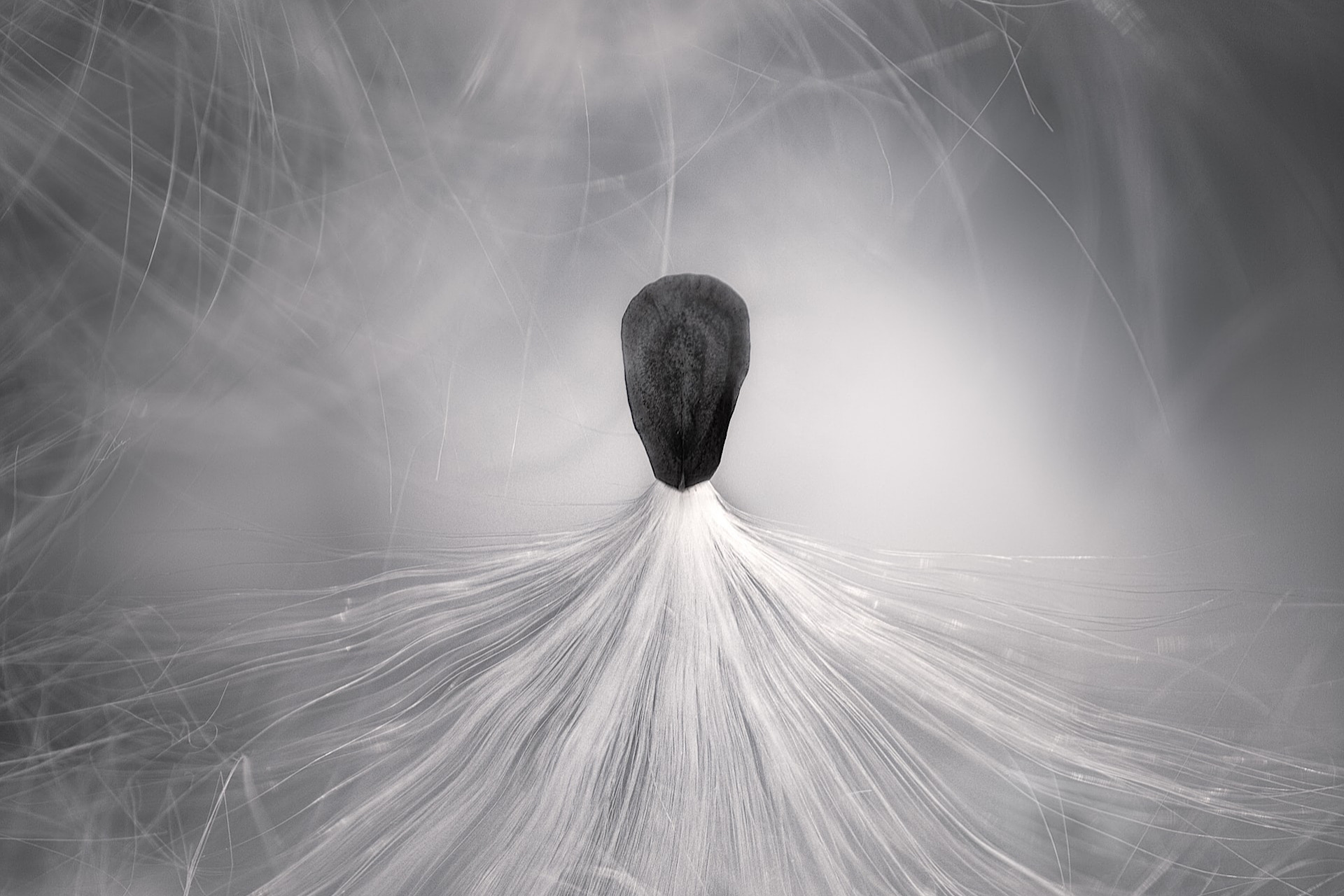Butterfly and pollinator gardens intrigue me. My interest was sparked by by our local Land Trust. My husband volunteers for them and provides oversight/maintenance for some truly remarkable open spaces in our community. This is where I first considered the importance of milkweed for pollinators.
The first time I visited a land trust property containing pollinator gardens, the teams were still working diligently on trails and site restoration. The pollinator garden had been planted earlier in the year and had gone to seed. Walking a trail cut to a beaver dam pond, I was enchanted by the milkweed in the fields. Their pods were dry and split open, surrendering silky down to the crisp autumn air. I hadn’t come upon milkweed in a very long time. It brought me back to the lot behind my grandparent’s barn. Back then, milkweed was actually viewed as weed. In the imagination of a child, however, anything you can make a wish on and blow into the wind holds a little magic.
The Magic of Milkweed
My growing interest in pollinators and native plants has led me to the realization that milkweed truly does hold some magic. It is the host plant and lifeline for the declining population of monarch butterflies. With that knowledge, I gathered up a few pods on my trek. I brought them home and tucked them into my table decorations during the holidays. They were naturally enchanting amongst tiny white twinkle lights and snow-dusted pinecones.
Tips for Planting Milkweed for Pollinators
When the cold days of February crept in, they had me longing for spring. I began researching how to start my milkweed seeds for my own backyard pollinator project. I learned milkweed requires cold stratification prior to planting. In short, the seeds need some time in cold storage to urge them to wake up and germinate in the spring. Here in the northeast, Mother Nature takes care of that by supplying cold and snowy New England winters. Since my seeds enjoyed winter break lounging in my holiday décor; it was time for them to partake in some tough love. I will discuss cold stratification of seeds in an upcoming post.
I’ve discovered some tough lessons through research as well as hands-on experience. Even if you get your seeds to germinate, milkweed is hard to transplant. Whether you dig it up and transplant it or attempt to place started seedlings in the ground; they are finnicky. (So much for the reputation of being a “weed.”)
Milkweed grows a long taproot that prefers to be left undisturbed. If you are starting seeds, you may want to consider planting them in biodegradable containers that will break down in the ground. This will leave that temperamental tap root alone and keep everything intact and impassive to being transplanted.
That being said, if you start seeds indoors, you will want to harden them off. This means gradually increasing exposure to sunlight, outdoor temps and wind. They need some TLC before abandoning them to the elements.
Worth The Effort
If there is one reason to plant milkweed: Do it for the monarch butterfly.
Although the size of overwintering monarch colonies has fallen across several decades, new studies are showing a slight increase in their numbers. I’m all for continuing to support that good work. Milkweeds in your area are the required host plant for monarch caterpillars; they feed almost exclusively on it.
Think of a host plant as a nursery; in that other organisms live on it and feed on it. Interestingly, the milkweed plant produces a sticky, white sap containing a mild poison. Monarch caterpillars, however, are immune to this toxin. Consequently, their bodies accumulate enough of the poison to make them unpleasant to their predators. Many insects that milkweed attracts also have orange and black coloring similar to the monarch butterfly. This serves as a warning to predators that they may be toxic and bitter tasting.
Aside from the benefits to the monarch, planting milkweed for pollinators is visually appealing and a nice contributor to your native flower garden. During growing season, the global clusters of flowers have a pleasant fragrance. Depending on the species, some describe it as vanilla-scented, while others note a sweet lilac fragrance. And take it from me, the dried pods and stems add charm to fall and winter decorating.
Related Links:
If you are interested in native pollinator plants, you might like this:
